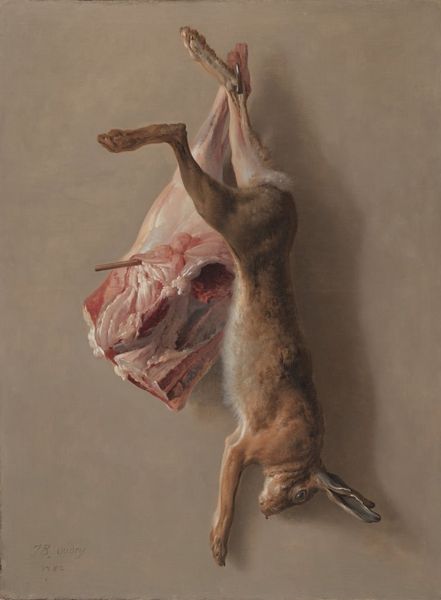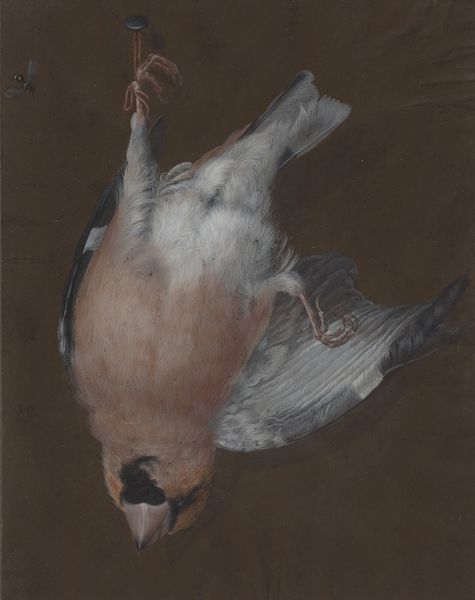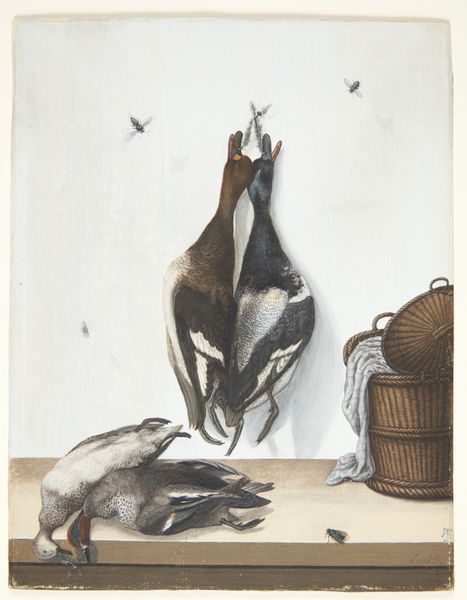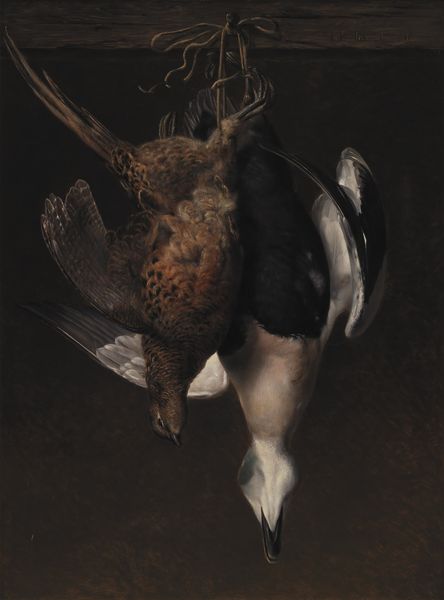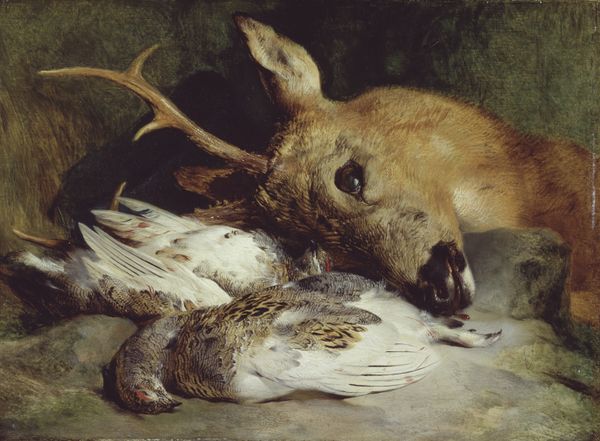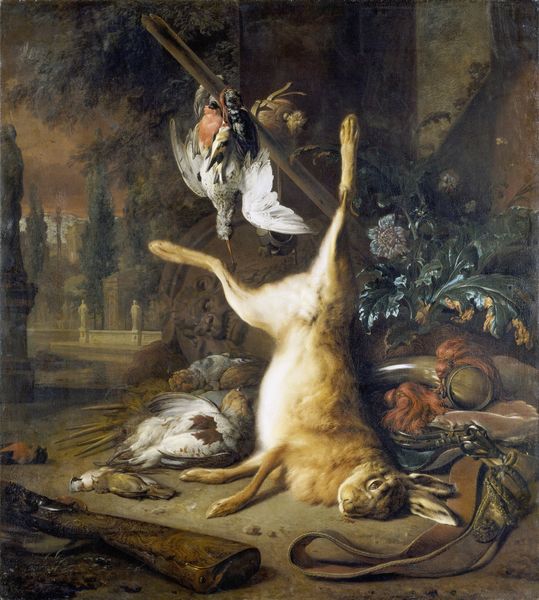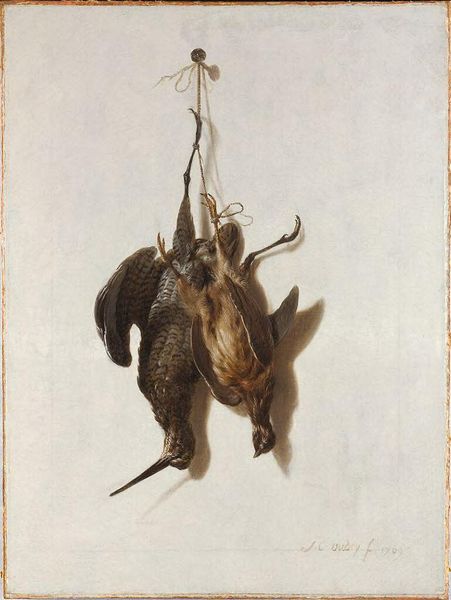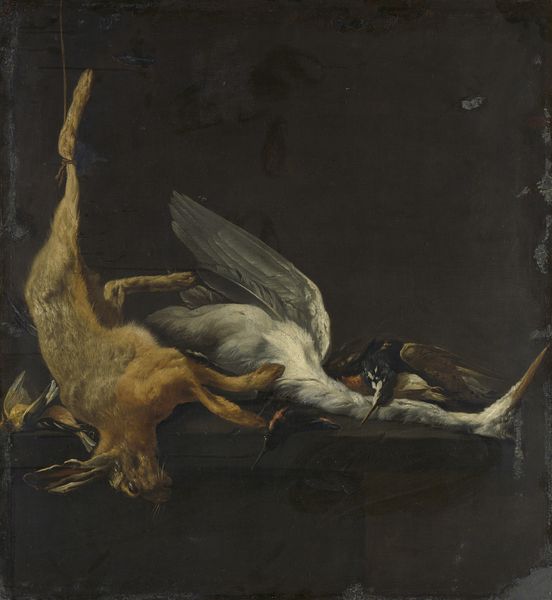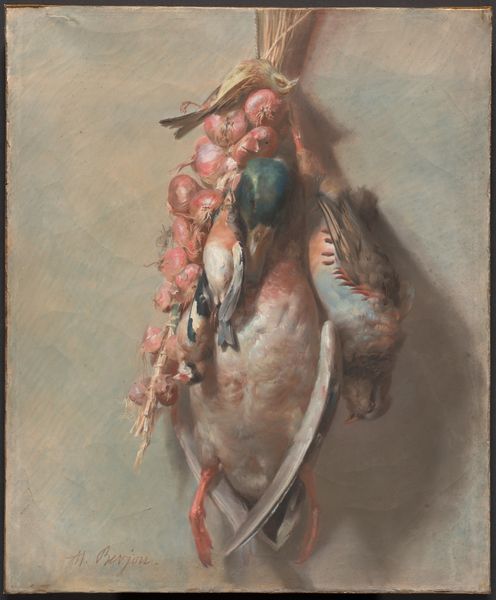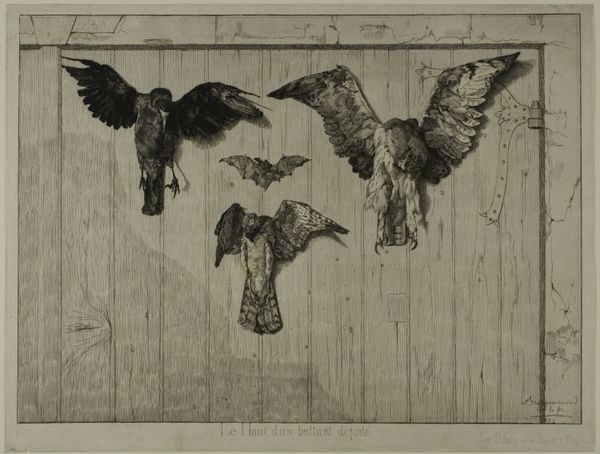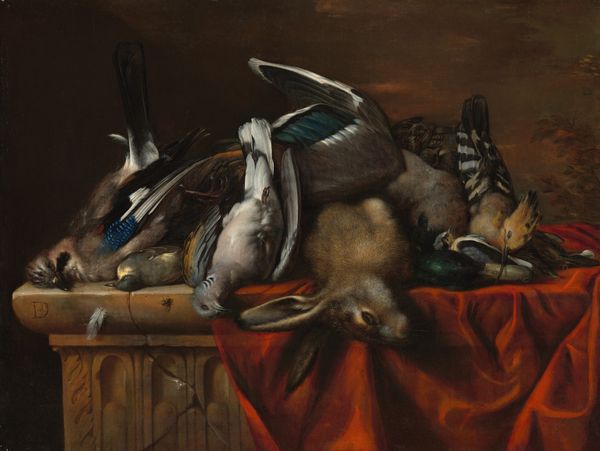
Still Life with Dead Hare and Guinea Fowl in Front of a Grey Wall c. 1885
0:00
0:00
painting, oil-paint, oil
#
16_19th-century
#
animal
#
painting
#
oil-paint
#
oil
#
bird
#
sculptural image
#
oil painting
#
painting painterly
#
history-painting
#
realism
Dimensions: 67.5 x 48.3 cm
Copyright: Public Domain
Curator: Oh, hello there. This oil painting by Otto Scholderer, titled "Still Life with Dead Hare and Guinea Fowl in Front of a Grey Wall," dates back to around 1885. It's currently held at the Städel Museum. What catches your eye about it initially? Editor: Well, apart from the rather obvious, I'm struck by how somber it feels. The grey wall definitely contributes, but it's more than just the color. It's the… stillness, the palpable lack of movement or life. You almost feel a chill. Curator: Yes, a certain quietness. But there’s a curious drama, too. For me, it's like looking into the quiet moments after a hunt, where all action ceases, and something reflective remains. Did Scholderer consider the economic transaction implicit here? This game for sustenance...or wealth. Editor: Interesting point. Looking closely at the textures...you have to wonder about access to the materials needed to create the painting itself—oil, canvas, brushes—that also hints at a certain level of privilege for both artist and patron, no? It's all about the production isn't it, and what it tells us. Curator: I feel the brushwork conveys a tangible sense of their weight and texture, the downy feathers, the rabbit’s soft fur—almost an invitation to touch. It is so realistic. There's such skill. Editor: Absolutely, but the skill also points to the labour involved, doesn’t it? Someone had to prepare the supports, grind pigments, prime the canvas. It reminds you of how entwined art is with craftsmanship, with industry really. Curator: Precisely! And, beyond skill, Scholderer prompts considerations around morality and respect, the relationship with animals, or mortality as such... Perhaps our human drama. Editor: Mortality served on a plate, perhaps. These artists had the time and materials, let’s not forget, to create the idea of something so realistic to contemplate these things, it all connects—to a wider material reality. It’s no longer enough just to reflect on the “drama” isn’t it, without considering the reality of its construction. Curator: I see your point and it opens fascinating ideas; and I come away contemplating cycles, from life to art. It’s powerful to bring them into dialogue this way. Thank you. Editor: Indeed! A painting prompts questions and the deeper we look the more questions arise and new layers become evident. The materials never lie, I guess.
Comments
No comments
Be the first to comment and join the conversation on the ultimate creative platform.
